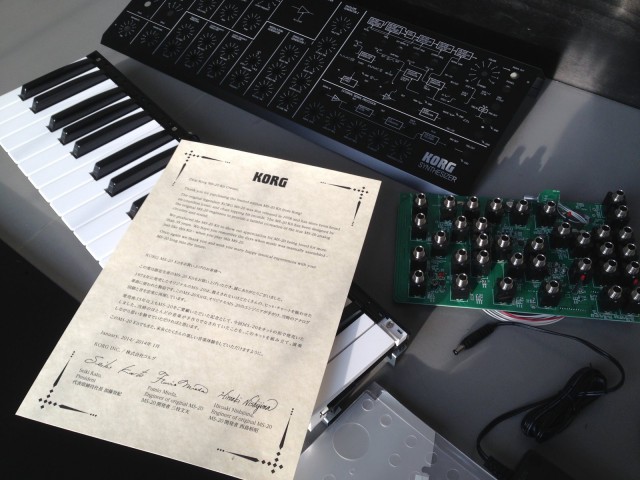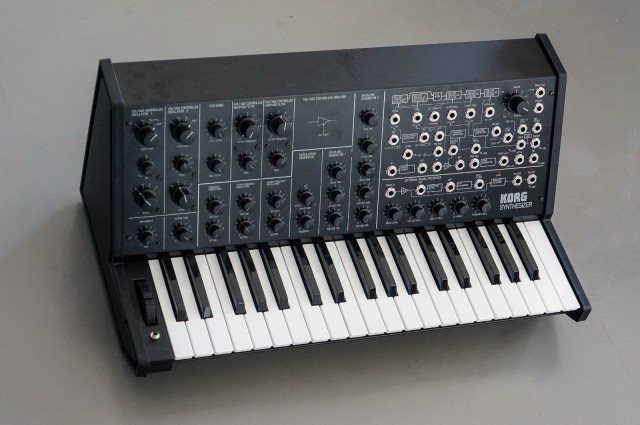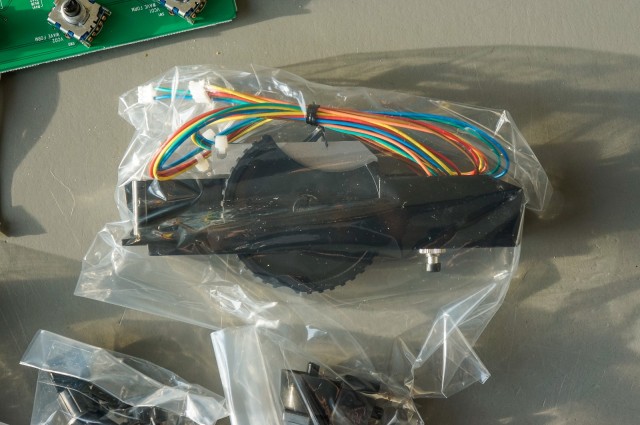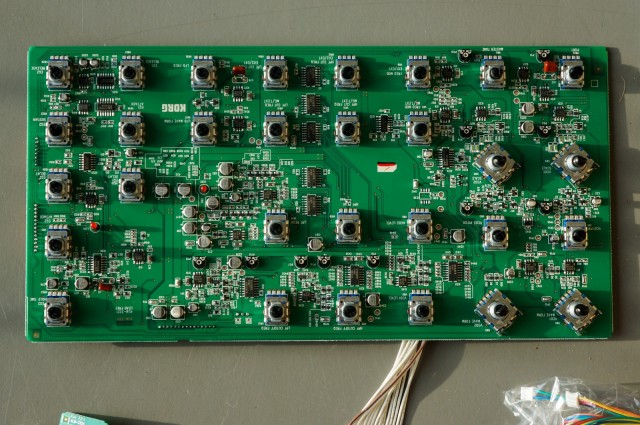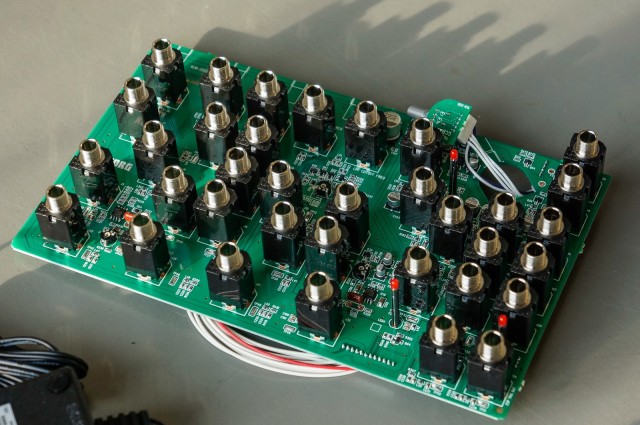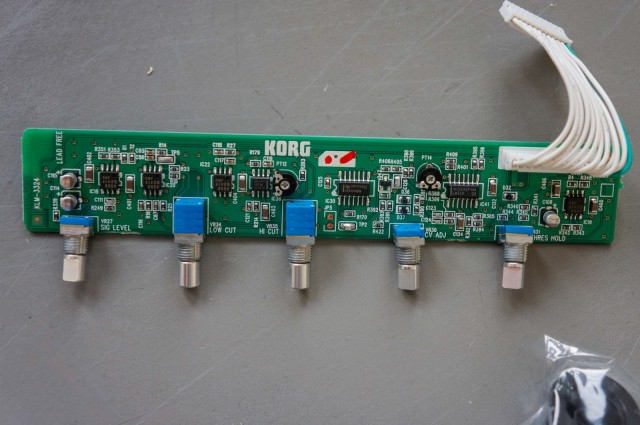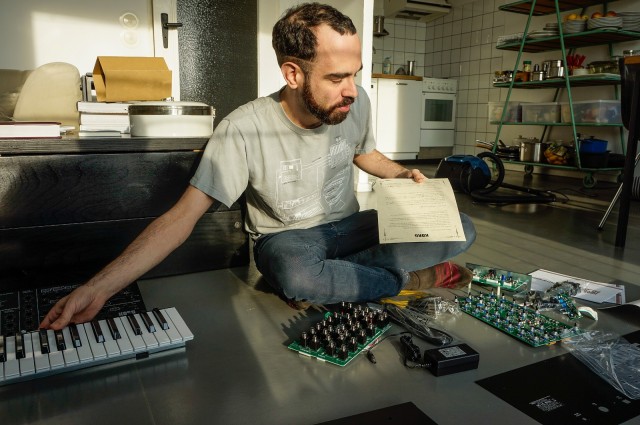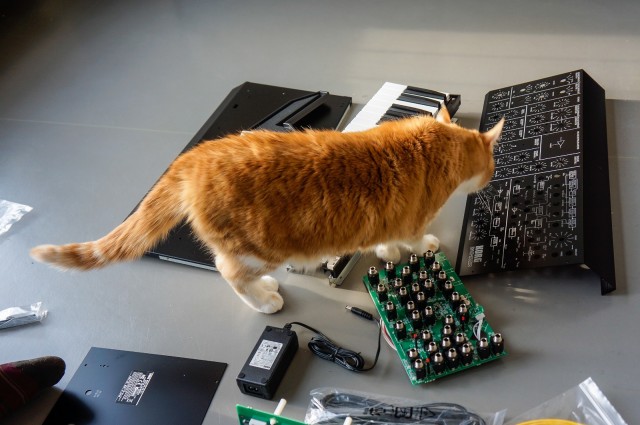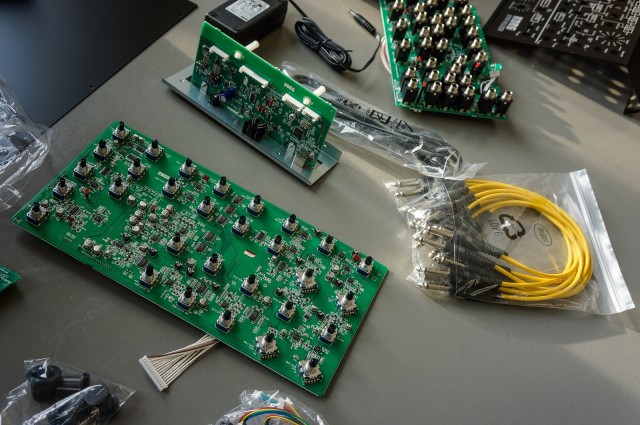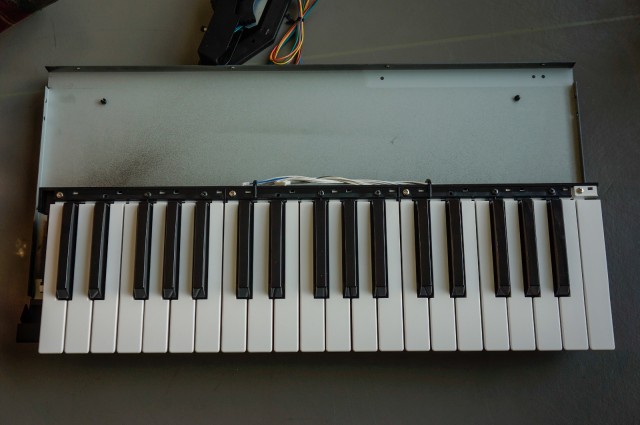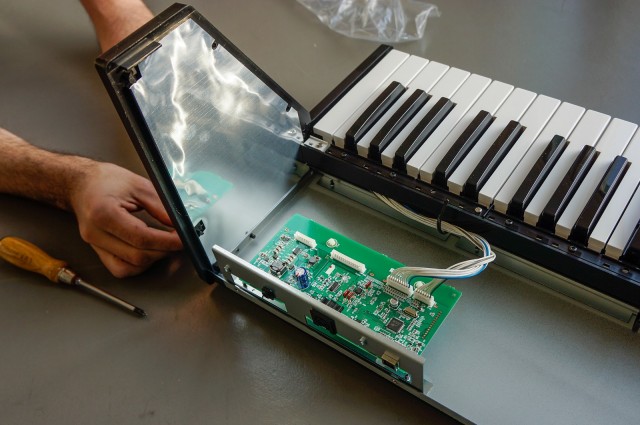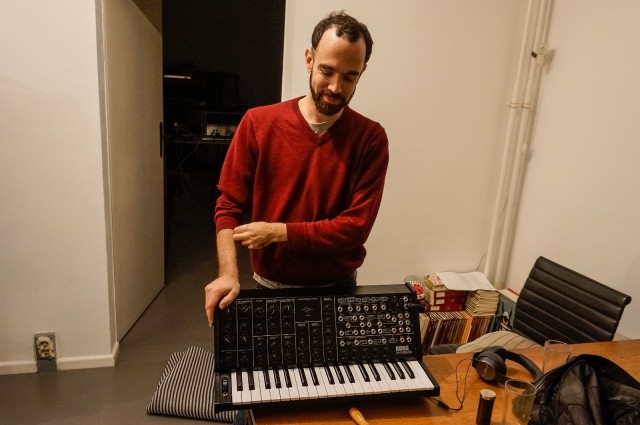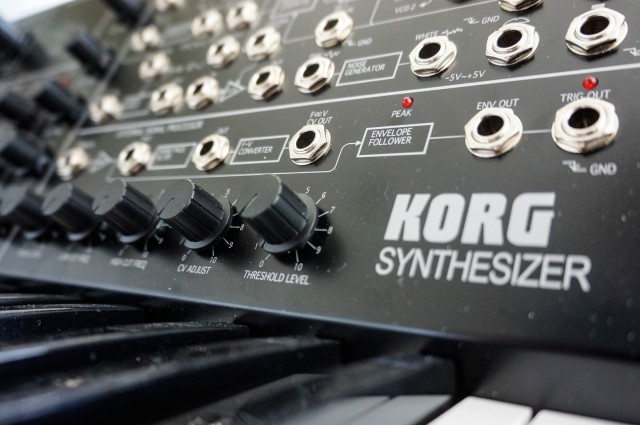Call it the MS-20 “Biggie.”
A year after remaking their classic 1978 MS-20 synthesizer in a hugely-popular “mini” version, KORG surprised everyone by unveiling a second reissue this year, the limited-edition MS-20 Kit. Its innards are entirely identical to the MS-20 mini; component-by-component, the sound circuitry is the same. And since the MS-20 was a fairly convincing replica of the original, inaccurate mostly in that it can’t reproduce the aged components we’re now used to, that’s a good start.
Now I’ve had the experience of assembling and playing the kit, following up our debut with the mini last year, and can share what I’ve learned.
Photos: Benjamin Weiss, aka NERK (mostly), of DE:BUG Magazine.
The differences in the special edition this year are mostly to do with size. Instead of the miniaturized keybed, enclosure, and jacks on the mini, you get an MS-20 that is physically indistinguishable from the original – full-sized keyboard, full-sized audio jacks. (Oddly, I read people complaining about the plastic sides. Sorry, everything old did not use Moog-style wooden endcaps; that is authentic.) There are only two things that are a giveaway this isn’t a vintage MS: one is the USB and MIDI port conspicuously added to the back, and the other, more telling sign, is that the thing is physically so darned clean, as it is a 2014 creation rather than late 70s / early 80s. Just as before, though, you even get a copy of the vintage manual and patching examples.
There was also one subtle change: you can switch between two analog filter circuits, choosing either the more unruly original MS-20 filter, or the cleaner, revised design included on later units. You select the different filters using a DIP switch inside the hardware. That means unscrewing the back panel – easily done, but still necessitating a screwdriver. Fortunately, KORG has also enabled a three-key startup sequence: depress those keys on the keyboard as you power on, and you can swap filter models on the fly. This appears not to be possible on the mini – certainly not without voiding the warranty.
Also changed is how the MS-20 Kit is delivered: as the name implies, you assemble it yourself. In fact, fully-assembled, it doesn’t quite fit in the box in which it’s packed.
In exchange for these differences, KORG significantly up-sized the price along with the physical hardware. The kit is going for a street of around 1300€ / US$1400. That’s roughly double what the mini costs. Think of this as a collector’s edition for die-hard enthusiasts. Given used MS-20 prices have climbed sky-high, it means you can still save a bit of money, and get a new unit that will function more reliably and hold its tune than the sometimes-unpredictable vintage hardware.
This is also why I expect the ARP Odyssey remake to carry a premium price. The MS-20 mini seems to be the one mass-market play.

In pieces… the Kit, as shipped. All of this arrives in little boxed compartments. You’ll notice most of the analog-ness of the MS-20 is already in place, though: you’re mostly assembling the enclosure and keybed, connecting ribbon cables, and attaching pots and jacks.

You’ll get up and close with the keybed. This one feels substantially different than the mini; size matters. (The cat joins for a bit of a paws-on review.)
IKEA Meets KORG: Grab the Hex Key, Synth Lovers
KORG delivered a kit to CDM to try out. To be honest, giddy a I was to get the box in hand, I was skeptical about the experience of using this MS-20. I was already pleased with the mini, meaning I would still tend to recommend that to most musicians wanting to add an MS to their rig.
But, now that I’ve spent time with it, I have begun to appreciate the logic of KORG adding this follow-up to last year’s mass-market mini. The size really does make a big difference. It’s hard to describe. You have the feeling of owning and playing the original, and yet … everything works perfectly. The instrument stays exactly in tune, combining the sound of the original MS-20 with the reliable performance of well-built modern hardware. And, oh yeah, it’s almost unnervingly clean, as in the level of grime on the outside. (Berlin air will probably solve that problem quickly, but still.) I expect purists will still be dissatisfied, but oddly, pragmatic purists may have finally found their match.
I don’t doubt that the price will – and should – limit the audience. But it’s best to think of the MS-20 Kit as a limited edition for enthusiasts, and the MS-20 mini as the model for the mass market. That would also explain the difference in price: it’s presumably down to a smaller production run, combined with the added costs of using full-sized parts. (Parts like pots can make a difference: I’ve had that experience as a manufacturer, and in the process of building the MS-20 Kit, you really notice how many bits and bobs go into this thing.)
Since the mini was extensively documented, I’ll focus here on the physical feeling of assembling the unit, which is the main change.
“Kit” to many synth enthusiasts means breaking out a soldering iron, so that audience may actually be a bit disappointed here. All you need is a couple of screwdrivers and the included hex key. Accordingly, the assembly process feels nothing if not like making something from IKEA – down to the printed instructions with graphic explanations.
It is fun to assemble the unit, no question; you get a feeling of being a bit more intimate with the synth. But most of the time in assembly is spent on the myriad knobs and patch points; there’s a whole lot of nuts-and-bolts assembly, literally. You can see some of that process in the images.
Analog though it may be, the real magic of the MS-20 is inside circuits that are already pre-manufactured on circuit boards. There just isn’t a lot for you to do apart from the mechanical assembly of those boards, the keyboard manual, and lots of physical controls and jacks. I think if you wanted to get closer to synthesizers as a DIYer, you’d probably want a bit of whiff of soldering. Of course, at the same time, you’d want to do that with a simple instrument, not an MS-20 that cost you well over a grand. And you won’t get anything that sounds like this once you’re done, either. So, the decision makes sense, even if it means you’re assembling the hardware from a much higher level.
Gear pr0n time, regardless:
Note the DIP switch for the different filter models. And, if you did want to do a hardware hack, clearly-labeled contact points.
On balance, the novelty of putting the thing together added to the fun, and gives you a feeling of being closer to the instrument once built than if you pulled it directly from the box. But the real investment in an MS-20 Kit won’t be motivated so much by that as the resulting synth. And there, this is something special.
Of course, KORG can’t keep going on with reissues forever. It’ll be equally nice to see new instruments, analog or otherwise, in the works. And that’s a challenge for our whole industry: we have to keep making history. Hopefully, the availability of this piece of history in more convenient form will inspire people to that challenge, perhaps looking back will drive some to look forward, as well.
But in the meantime, I wouldn’t hesitate to recommend the MS-20 mini as one of the better deals in synths right now, even with some tough (and more modern) competition, and the MS-20 Kit really is a gem for collectors willing to make a larger investment.
Gone in 60 Seconds… or, Patching in 60 Seconds
As for sounds, we’re working on some music and a sound library with the MS, so stay tuned – hopefully we make a drum kit that has a fresh take on some of the noises this beast can make, which we can share with you. And that’ll be free, in case your budget for synths at the moment is zero. (I know the feeling.)
While we work on that…
KORG USA’s Richard Formidoni, the talented and inventive product specialist, just sent me an examples of how weird and wild you can get with patching. (This is a mini, too, but as I said, the sounds and routings are identical.)
He calls it “hot-wiring” aka “Grand Theft Auto.” You’ll hear why. The MS-20 is really more semi-modular than modular, but it has just enough patch points for a vast array of what you would normally want to do.
If you want to try this yourself:
Pink noise – ESP Signal In
ESP Band Pass Filter Out – Ext. Signal In
Mod. generator saw/tri out – VCA In
VCA out – Total in
VCA Control Input – Button
VCO 1+2 CV in – Mod wheel
Trig. In and Trig. Out are the hot wires
And here’s “Hugo,” the track Benjamin Weiss and I produced as NERKKIRN with the original MS-20 mini – providing here, of course, all the synth sounds (not the percussion). Whether or not the mini sounded exactly like a particular vintage MS-20 to me isn’t even exactly the right question. Hardware quality tolerances aren’t the same in 2014 as when the MS-20 was made, hardware varies from unit to unit, and you can’t actually emulate the effects of age. (You also wouldn’t especially want to.) What we have found in producing with the MS-20 is that this is an instrument with real character, one we can push to find undiscovered sounds. It’s a pleasure to do it with one that has the feeling of the original, even if some of those effects are psychological. Psychology is really what instruments are about; they’re expressive devices, not scientific instruments. And the MS holds up, in a way that should indeed challenge creators of new electronic instruments, software or hardware, analog or digital, today.
“HUGO” | DIMENSION / Series video feat. NERK/KIRN from Peter Kirn on Vimeo.
from: http://v-records.de/v020-nerkkirn-remnant-hugo/
More MS sounds coming soon.
